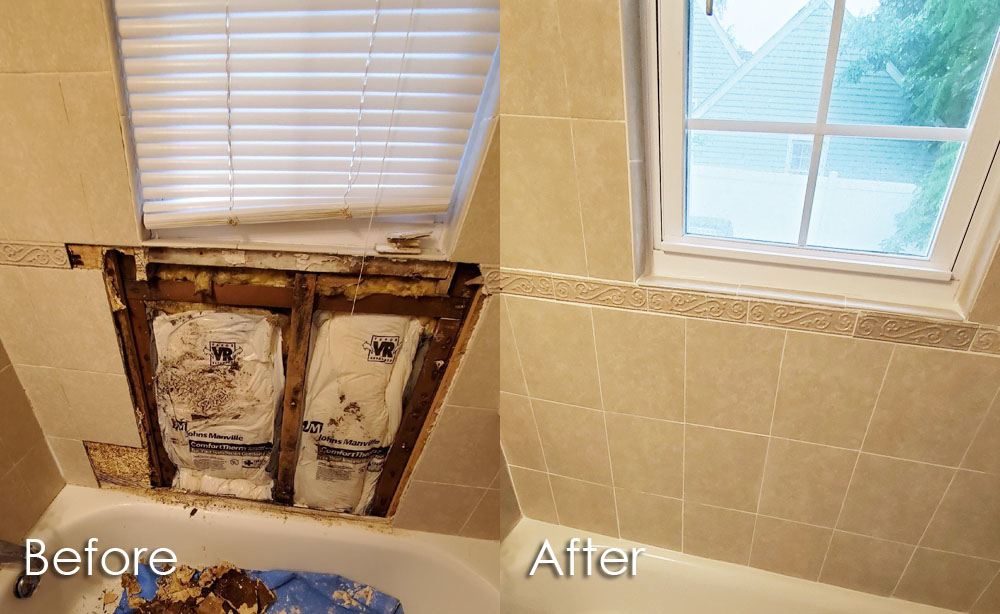What're your beliefs about Preventing Water Damage in the Bathroom?

The restroom is exceptionally susceptible for damp build-up and prospective water damages due to the regular use water in it. This short article uses easy examination techniques to assist finding water damages hazards.
The frequent use of water in the shower room makes it exceptionally at risk for moist build-up as well as possible water damage. By evaluating it regularly, you can decrease water relevant problems.
The following set of assessments is very easy to execute and must be done as soon as in every three months in order to keep your bathroom in good shape as well as to avoid prospective water problems triggered by the tub, the shower, pipe joints as well as plumbing, sinks, closets, as well as the bathroom
Do not forget executing these examinations and also be detailed while performing them. Keep in mind that these simple inspections can save you a lot of money by providing early indications for water damage
Sinks and Cabinets
Sinks as well as cupboards are revealed to dampness and also moisture daily and are frequently neglected. Examine frequently under the sink as well as on the counter top over it. Fix any type of drip in the trap as it may recommend drainpipe troubles. Browse the sink, sluggish draining pipes may indicate an obstructed drainpipe. Replace sink seals if they are broken or loose.
Bathtub and also Shower
The shower and also tub require special focus and also upkeep. Check the tiles and also change if broken. Make certain that there is no missing out on cement between the ceramic tiles. Examine and replace fractured caulking at joints where the wall surfaces fulfill the flooring or the tub. Clogged drains and also pipelines issues will protect against the tub from drying and also might indicate serious troubles below the bathtub. Seek advice from an expert instantly to stop structural damages. Focus on discolorations or soft areas around the bath tub wall surfaces as they may indicate an inner leakage.
Plumbing
Signs for water damage are tough to find considering that a lot of pipelines are installed inside the wall surfaces.
Pay special focus to flooring and wall surfaces moisture as well as discolorations as they may suggest an unnoticeable plumbing issue. Check wetness levels in adjacent spaces as well.
The Bathroom
The toilet is a vulnerable water joint. Check the water lines and search for leaks around the bathroom seat, in the tube, and under the water storage tank. If you detect any type of indicators of moisture on the flooring around the toilet, look for leakages in the toilet rim and also storage tank seals.
Be aware that hanging bathroom bowl antiperspirants increases the opportunities for clogs.
Water Damage Signs In The Bathroom To Avoid Cleanup
Musty smell
This is one of the easiest signs to catch because musty smells are so odorous. The damp, earthy, moldy smell should be a big red flag. The smell will develop when moisture gets trapped in surfaces, and begins to facilitate mold growth. Leaking pipes under cabinets, inside walls, and behind shower fixtures will cause moisture to stay trapped and not dry, which will lead to mold growth and spread. As soon as you notice any musty smells in your bathroom, have it checked for hidden water damage and cleanup signs.
Visible mold
If the smell isn’t there to give it away, sometimes you will actually see mold growth. Finding mold in your bathroom is a serious problem, because mold is very harmful to your health. By the time mold growth is visible, it also means that water damage has already occurred and been present for some time. The only way the mold problem can be resolved is to find the source of the moisture and get it stopped. To safely and adequately remove mold, you need to have professionals handle the remediation. Do not waste any time in getting mold problems addressed, fixed, and sanitized so that you can protect you and your family from the many respiratory symptoms caused by mold exposure.
Damaged floors
Bathroom floors should be able to withstand some exposure to water while still remaining in good condition. However, when excess exposure or water leaks occur, they will begin to damage even the most water-resistant flooring. If you notice any cracking, bubbling, staining, or warping on your bathroom floors, there is probably a water leak somewhere causing the distortion. If you notice areas of the floor have become softer, or even have a spongy feeling, there is probably damage to the subfloor. Subflooring is typically made up of plywood. When plywood is exposed to water or moisture, it will absorb it. Once it has become saturated, the weight of the excess water will cause the wood to swell and soften. Check the floors in your bathroom frequently to catch any of these sings before they lead to damaged subflooring.
Changes on walls
When water leaks behind walls, it will cause changes in the drywall. Peeling plaster, blistering paint, and soggy wallpaper are all good indicators that excess water is building up behind the wall. Water leaking behind drywall will cause it to swell and be soft to the tough. If you start to notice gaps along the trim of your walls, or where tile meets the wall, it could also be a strong indicator that there is a leak behind the wall. Any changes, distortion, or damage on the walls should be evaluated as soon as you notice it to prevent further water damage and cleanup.

I came across that review about Preventing Water Damage in the Bathroom while doing a lookup on the web. Enjoyed reading our blog entry? Please share it. Let another person locate it. I cherish reading our article about Preventing Water Damage in the Bathroom.
Get A Free Quote